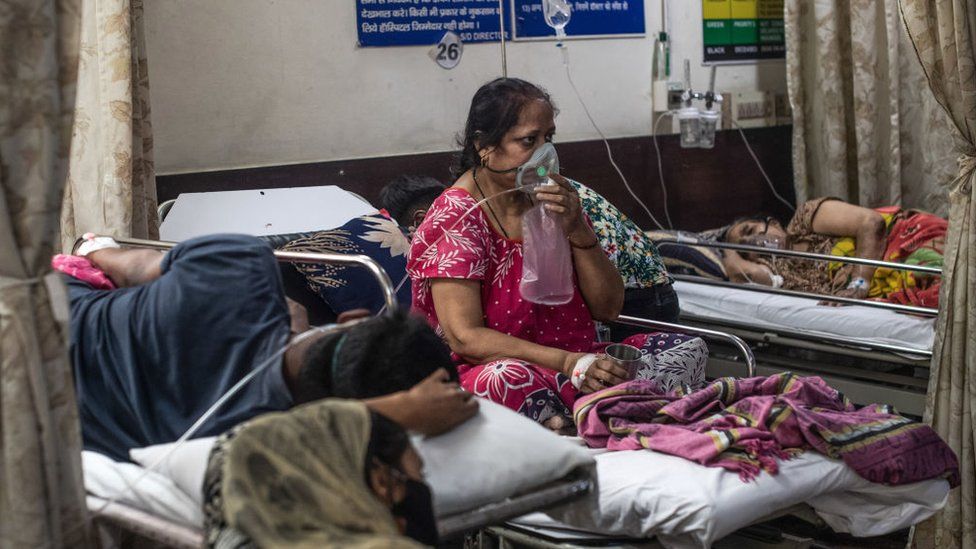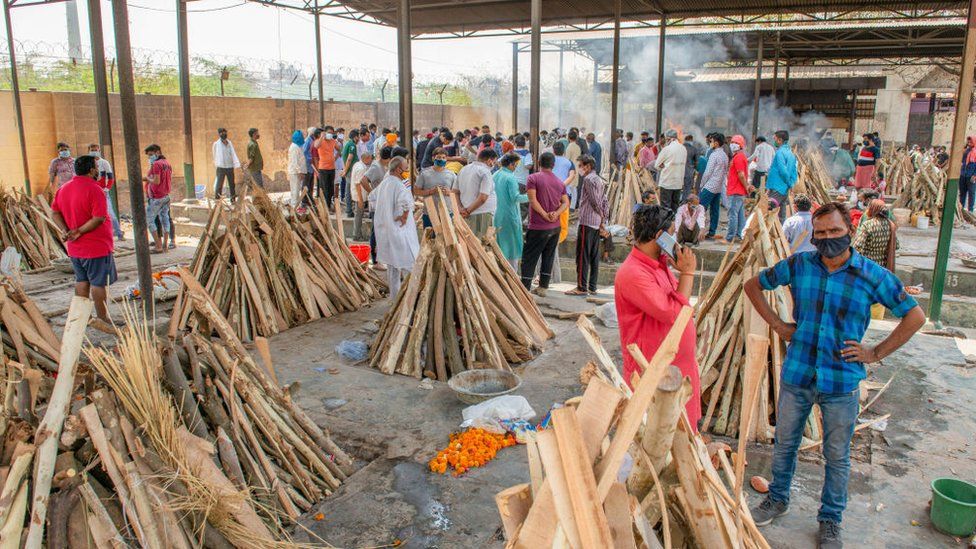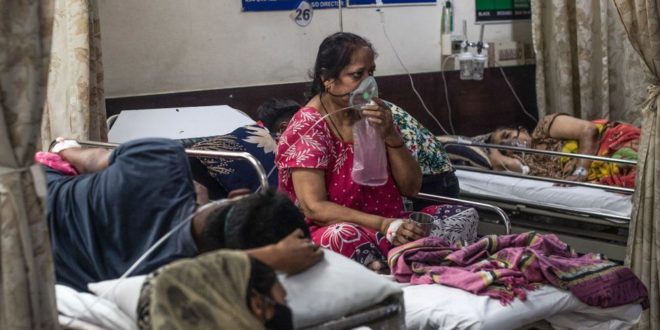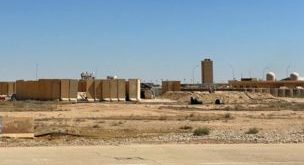
India has recorded more than 20 million Covid infections, but the government says that cases are “slowing down”.
The country added more than 355,000 cases on Tuesday, down from more than 400,000 daily cases on 30 April.
But testing numbers have dipped as well, sparking fears that India’s true caseload is far higher.
Case numbers, however, been consistently falling in Maharashtra state, which had driven the second wave since early April.
Meanwhile an oxygen shortage has shown no signs of abating and people in several hotspot cities, including the capital Delhi, are struggling for treatment.
India’s second wave, fuelled by lax safety protocols and massive public festivals and election rallies, has also overwhelmed its hospitals. Delays in testing, diagnosis and treatment, as well as a shortage of critical care beds and crucial drugs, has resulted in a spike in deaths too.
The country has so far reported more than 222,000 deaths due to the virus. But experts say India’s Covid death toll is vastly under-reported as official tallies don’t appear to match what people are witnessing on the ground – long lines at crematoriums, mass funeral pyres and cities running out of space to bury or cremate the dead.
Many states have introduced restrictions, from full lockdowns to night curfews. The northern state of Bihar, which has been adding about 13,000 daily cases in recent days, is the latest to announce a full lockdown -only essential services, such as government offices, groceries and hospitals, will be open.
Are infections actually slowing down?
While India’s daily caseload does appear to have fallen, it’s too early to say if infections are slowing down.
Given delays in testing and official record-keeping, experts typically look at weekly averages rather than daily cases for a more accurate picture. And on average, India’s cases were rising this past week – but at a slower rate than the previous week.
But it’s also true that daily cases have fallen, on average, in Delhi, Uttar Pradesh and Maharashtra, all hotspot states.
Erratic testing, however, makes it hard to gauge the significance of these numbers. While Maharashtra’s testing numbers have been consistent, Delhi’s have dropped in recent weeks.
The other issue, experts say, is insufficient testing. While Uttar Pradesh, one of the worst-affected states, has recorded no drop in testing figures, it’s testing far less than other states.
It’s India’s most populated state, with more than 220 million people and is doing about 184,000 tests per million people. Compare that to Tamil Nadu, which has about 75 million people and is doing more than 300,000 tests per million of its population.

Health officials said there was “cautious hope” of some respite from the second wave. But Lav Agarwal, joint secretary of the health ministry, said that the “gains” were very early and needed to be sustained by “containment measures at district and state level”.
Experts also say that other hotspots are likely to emerge in the coming weeks as the pandemic moves through the country.
A struggle for oxygen
Delhi’s government has said it wants the army to run Covid care facilities and intensive care units.
Delhi Chief Minister Arvind Kejriwal has repeatedly said that the city is not getting enough oxygen from the federal government, which allocates oxygen quotas to states.
But federal officials deny there are shortages, saying the challenge has come from transportation.
India produces thousands of tonnes of oxygen a day, but some experts say the supply crunch comes from a lack of investment in distribution networks.
Delhi hospitals have resorted to sending SOS messages on social media to secure supplies. For residents, hours spent in queues to top up portable canisters have become part of daily life.
Officials have also been urged to find more sites for cremations as the city’s morgues and crematoriums are overwhelmed by masses of Covid deaths.
 IMAGE COPYRIGHTGETTY IMAGES
IMAGE COPYRIGHTGETTY IMAGESIs India’s vaccination drive helping?
A sluggish vaccination campaign has compounded the crisis.
Since January, India has administered more than 157 million vaccine doses so far – it ranks third in the world, after China and the United States. But just over 10% of India’s 1.4 billion people have had one dose and only about 2% have got both doses.
Despite being the world’s biggest producer of vaccines, India is facing a shortage of supplies. And vaccination rates are down, from 3.7 million doses a day about a month ago to just 1.7 million a day.
The chief executive of India’s Serum Institute, the world’s biggest vaccine manufacturer, has warned shortages will last for months. It’s set to deliver 220 million doses over the next few months, which would still only cover 8 per cent of India’s population.
The Indian government is reported to be in discussions with Pfizer, which is seeking an “expedited approval pathway” for its Covid-19 vaccine.
BBC.COM
 Home Of Ghana News Ghana News, Entertainment And More
Home Of Ghana News Ghana News, Entertainment And More





